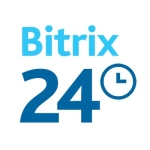I contacted, coordinated, and integrated project teams regarding assignments and follow-up actions instead of using email, weighing the pros and cons.
We can view Microsoft Teams as a cloud-based project platform for sharing files, assigning tasks, designating assignees, sharing real-time information, and collecting project tasks. It provides each teammate with their own cloud storage space to store data, and standard operating procedures (SOPs), and facilitates the exchange of group knowledge within the workspace.
For project planning and monitoring purposes, Microsoft Teams replaces traditional conferences, phone calls, and weekly reviews. Additionally, for seamless integration with Office 365, Teams works seamlessly with other Microsoft Office 365 applications such as Word, Excel, and SharePoint. This makes it easy to consistently create, edit, and share documents, streamlining revisions.
The tracking status and communication are no longer restricted to conference rooms or limited areas. In a mobile working environment, flexibility and ease of access are essential to facilitate progress and collaboration. MS Teams offers features for hosting virtual meetings, webinars, and live events, which is especially valuable for remote or distributed project teams and training events. Most importantly, configure notifications to stay informed about project updates, mentions, or changes in channels. These features replace email for points of contact and maintain records instantly.
Project teams may notice last-minute information updates and keep track of actions using the same project document and its revisions. In the field of technology, several progress updates may be necessary to achieve a status report.
Microsoft Teams can facilitate the broadcast of information and distribution of tasks through a single platform. The integration for team collaboration can expedite decision-making and enhance alignment towards the same project goal among the right people, at the right place, and at the right time.
Microsoft Teams can help overcome potential barriers and delays in achieving project objectives, marking the era of instant messaging demands.
The weekly project status update has transitioned into instant reporting. We now have two communication channels: online broadcasting and recording for those who are absent. Advanced instant messaging has expanded its capabilities to connect people worldwide and truly reflects the forward movement of technology.
The future scalability can include the integration of planners, project management tools, SharePoint, and more applications that are used. This capability is determined by its impact on project planning, questionnaires, surveys, and to-do lists
I have had four years of experience with the product.
























